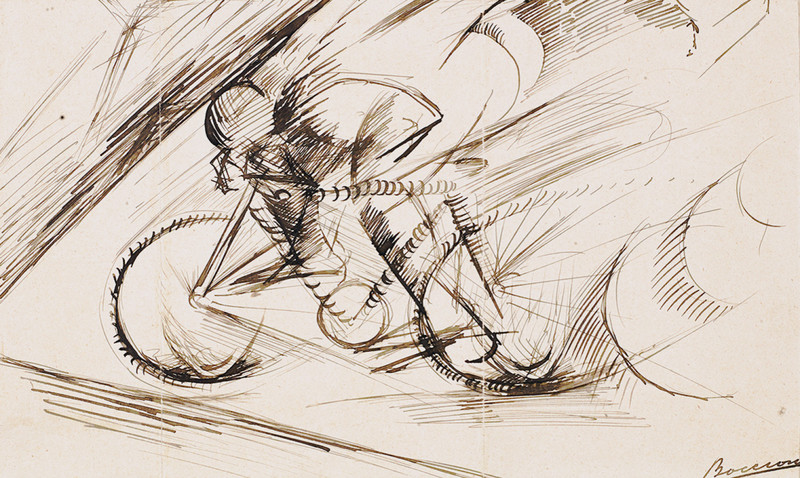Celebrating Twenty Years of the Estorick Collection
Founded: London, January 1998
Current Exhibition: ‘The Enchanted Room: Modern Works from the Pinacoteca di Brera,’ Estorick Collection, 24 January 2018 – 8 April 2018
The only gallery in Britain devoted to Italian modernism has just celebrated its twentieth anniversary. To mark this momentous occasion, the museum has curated an exhibition with works from one of the world’s most important collections of Italian art, housed at Milan’s Pinacoteca di Brera.
‘The Enchanted Room: Modern Works from the Pinacoteca di Brera,’ includes paintings and sculptures donated to the museum by the collectors Emilio and Maria Jesi. The show reveals iconic images by Umberto Boccioni, Gino Severini and Mario Sironi, a remarkable selection of metaphysical paintings by Carlo Carrà, and important works by Giorgio de Chirico, Giorgio Morandi and Filippo De Pisis.

Carlo Carrà, The Metaphysical Muse (1917). Image courtesy the gallery.
Collect Art like Eric Estorick
Championing Italian art in London became a defining feature of Eric Estorick’s (1913–1993) life. The Collection’s founder was a pioneering collector of Italian Futurism, accumulating works by these avant-garde modernists shortly after his arrival in Britain following the Second World War.
Eric’s ambitions were clear from the outset and his collection expanded rapidly during the period between 1953 and 1958. The trailblazing exponent of Futurism began promoting his vast collection around Britain. In 1956, in collaboration with the Arts Council, Eric’s exhibition at the Tate Gallery, “Modern Italian Art from the Estorick Collection,” was met with critical acclaim.
As the Tate stated in its exhibition catalogue: ‘Mr. Eric Estorick, in assembling his collection of paintings, sculpture and drawings by contemporary Italian artists, has not allowed himself to be swayed by the wayward trends of the international market. He has been to Italy, paid many visits to studios, and has tried to form his own opinion of a situation which is not particularly easy to judge.’
As a result of its success, the display travelled to several European and American venues, and a decade later, the Tate Gallery sought a long-term loan of key works from the collector’s oeuvre. This partnership lasted from 1966 until 1975.
Italian Futurists and “the new”
Featuring over 120 works by many of the most prominent Italian Futurists, the Estorick Collection opened to the public in January 1998. Amongst the plethora of celebrated artists housed in their Georgian building in Islington, notable names include Giacomo Balla, Umberto Boccioni, Carlo Carrà, Gino Severini, Luigi Russolo and Ardengo Soffici, Giorgio de Chirico, Amedeo Modigliani, Giorgio Morandi, Mario Sironi and Marino Marini, and a number of paintings and sculptures by English artists like Edward Dutkiewicz.

Giacomo Balla, Speeding Automobile (1913). Image courtesy the gallery.
Originating in 1909, the Futurist movement held a dogmatic obsession with “the new”. They revered industrialisation, technological innovation, and scientific advancements. They saw the exponential growth of urbanisation as mankind’s triumph over nature. This is symbolised in the dynamism we see in their work.
Until 1911, when the Futurists began to develop their signature aesthetic, they mostly drew inspiration from post-impressionism, divisionism and pointillism. Though various sects emerged as the group expanded throughout the 1910s, their influence on European art was significant.

Umberto Boccioni, Dynamism of a Cyclist (1913). Image courtesy the gallery.
Twentieth anniversary
The Estorick Collection’s twentieth anniversary provides an apt opportunity to renew our appreciation for the richness of art Eric Estorick and his foundation have promoted. Eric’s foresight has become an archetypal model for the aspiring art collector; as has his contagious enthusiasm for Italian modernism, which has solidified his legacy in the art world. As he so brilliantly demonstrated, art collecting is more than an occupation. It is a form of art in itself. It requires confidence in one’s aesthetic judgment, an awareness of contemporary and historic cultural trends, and an eye to the future.
The Estorick Collection is open to the public from Wednesday to Saturday, 11am – 6pm, and Sunday 12pm – 5pm.
Author: George Greenhill
Cover image: Eric and Salome Estorick. Image courtesy the gallery.

